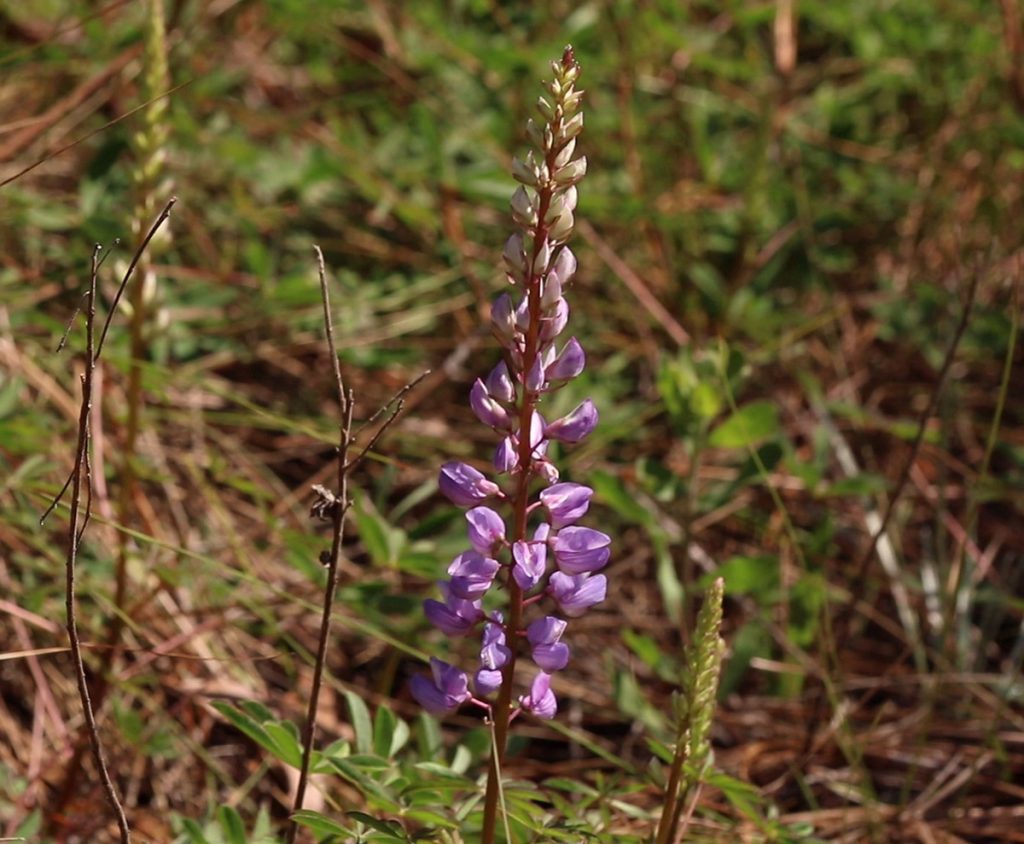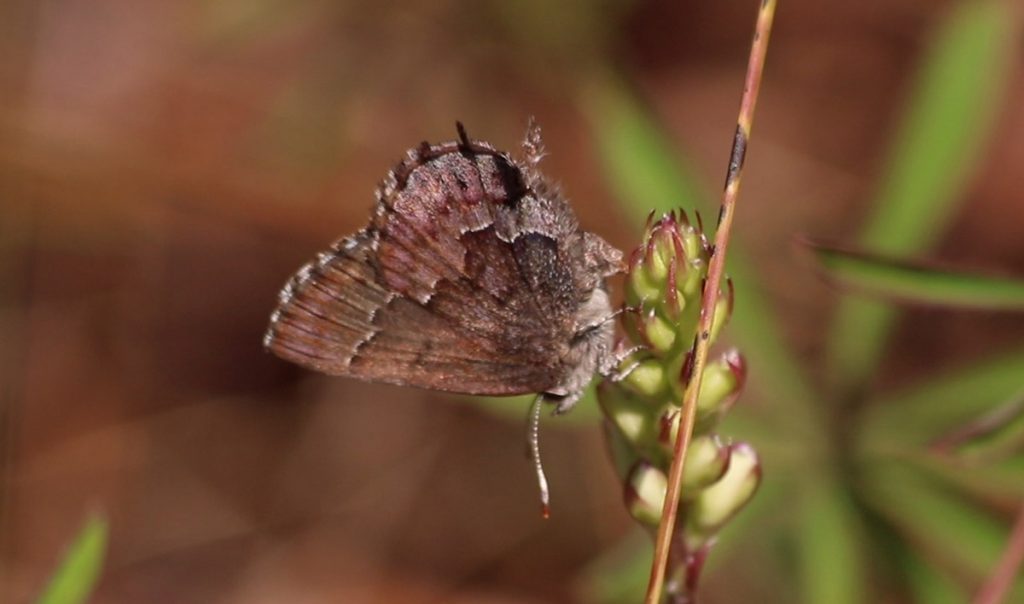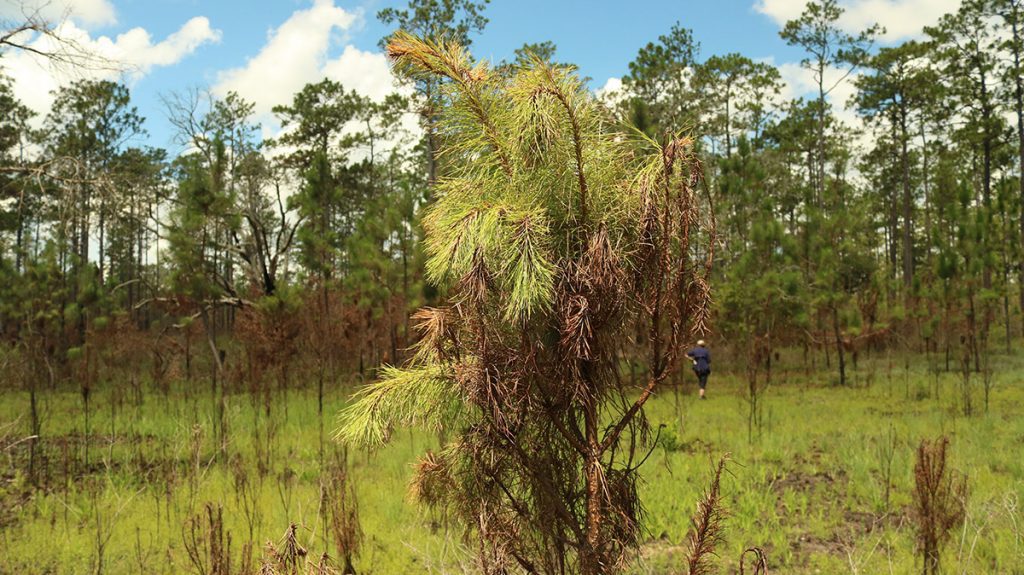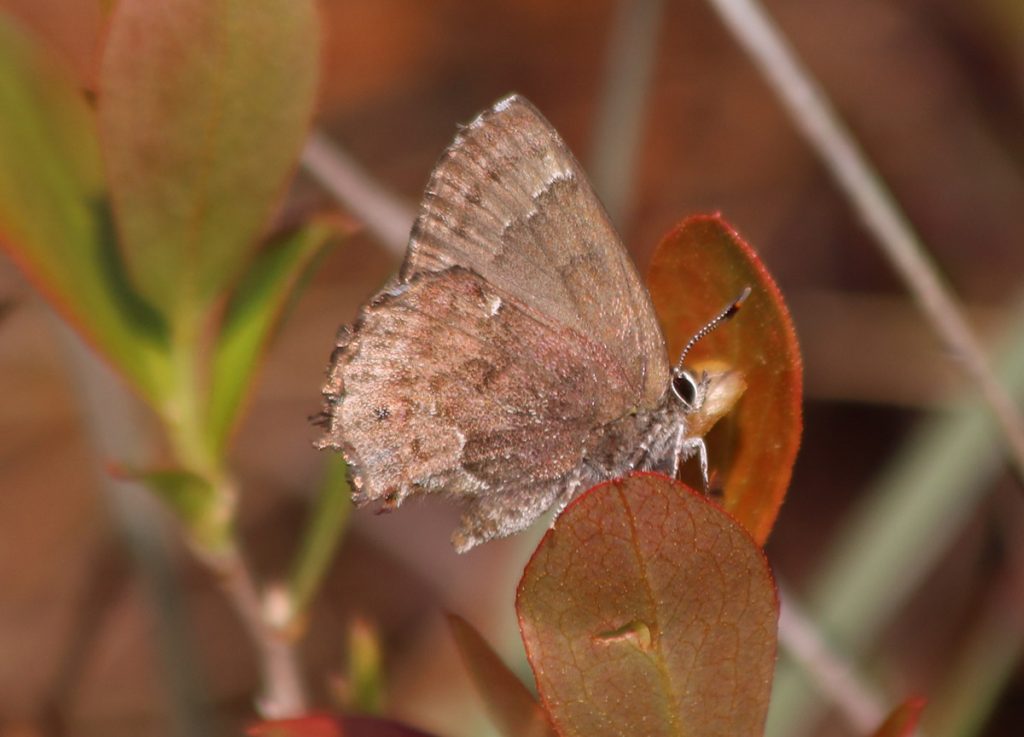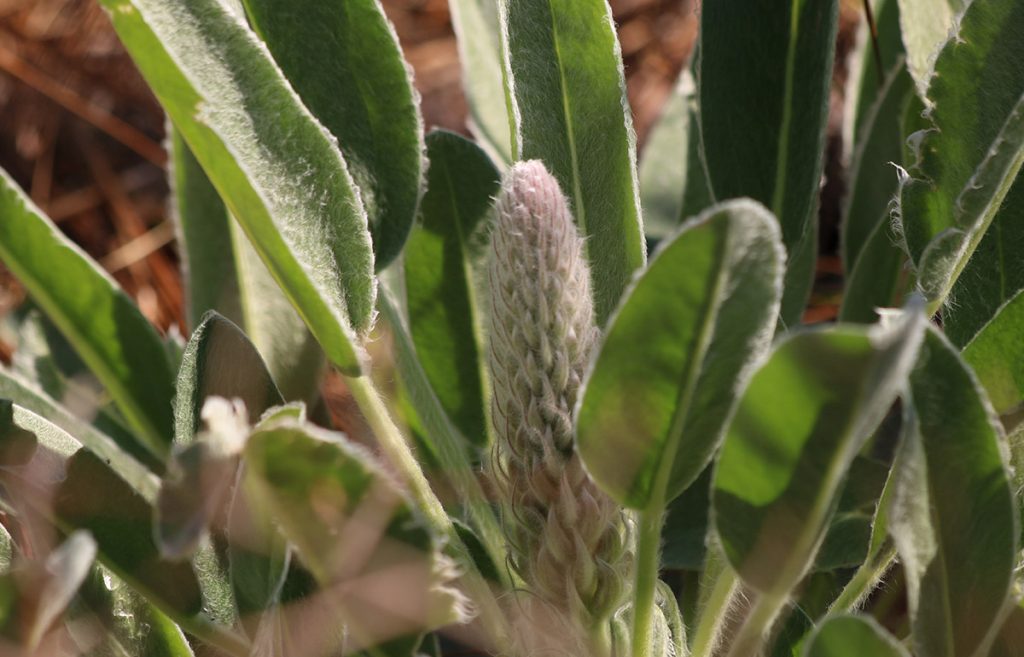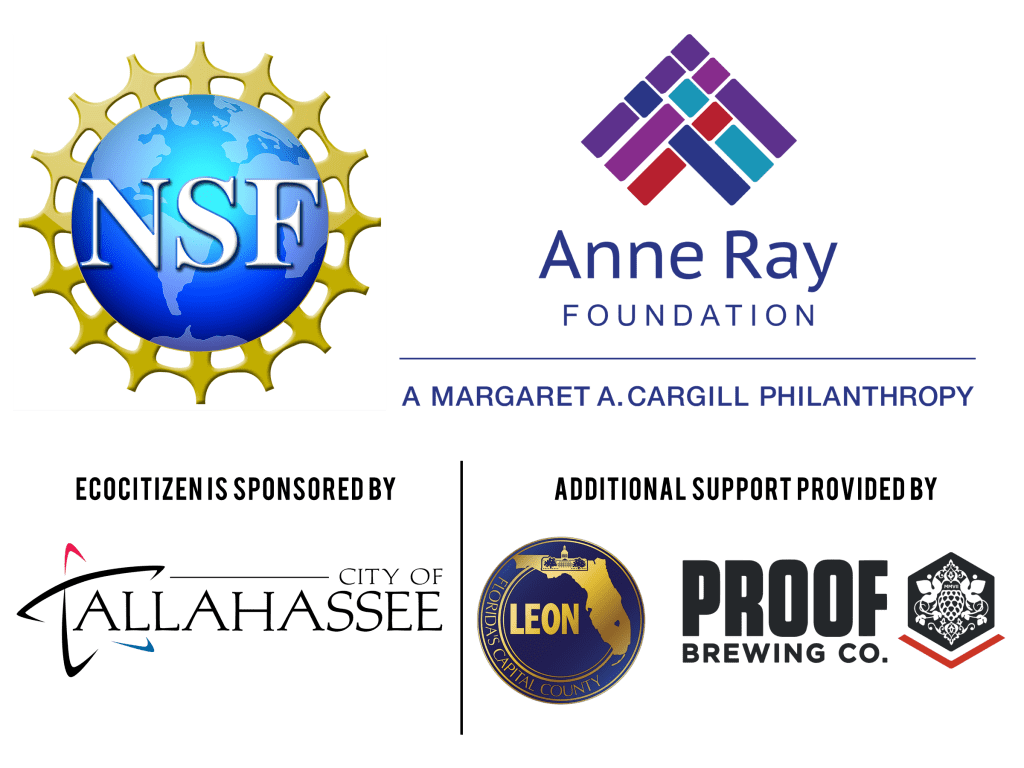This is a story about citizen scientists and an animal with a tight seasonal schedule, the frosted elfin. In other words, a perfect story to compliment the upcoming American Spring LIVE broadcast.
We’re about two weeks away from EcoCitizen Day, where you can observe wildlife at Lake Elberta and in the Munson Sandhills, where we find this butterfly. We’re also just over two weeks away from PBS Nature’s American Spring LIVE (April 29, 30, and May 1 at 8 pm ET on WFSU-TV). EcoCitizen was made possible by a grant from PBS Nature, and is sponsored by the City of Tallahassee. Additional support has been provided by Leon County and Proof Brewing Company. EcoCitizen Day is a part of the Florida Fish and Wildlife Conservation Commission’s Tallahassee/ Leon County City Nature Challenge.
We’re offering field trips to the Munson Sandhills for EcoCitizen Day. The trips are free, but you have to register ahead of time.
Subscribe to the WFSU Ecology Blog to receive more videos and articles about our local, natural areas, and subscribe to the WFSU Ecology Youtube Channel.
Rob Diaz de Villegas WFSU Public Media
Some of the best shoots come after last minute phone calls. Yes, I try to schedule shoots in advance, but animals follow their own schedule. I do my best to keep up. Dean and Sally Jue called yesterday saying that, after weeks of clouds and rain, today it would be sunny enough for butterflies to fly. And it would be warm enough for them by 10:30 am or so, about 65 degrees. So we’re going to go looking for frosted elfins.
I follow their car off of Old Woodville highway and onto dirt roads in the Apalachicola National Forest. We’re in the Munson Sandhills region of the forest, just south of Tallahassee. It’s an area I visit often, though usually for stories on ephemeral wetlands. Today we’re in the uplands, in the longleaf forest.
When we think of fire dependent animals of the longleaf pine habitat, we think of vertebrates. Red cockaded woodpeckers. Bobwhite quail. Gopher tortoises. Even amphibians like the frosted flatwoods salamander and the striped newt are getting attention. But what about insects? Last year, we visited a spot in the forest not far from here with renowned ant biologist Walter Tschinkel. There are dozens of native ant species in the forest (those fire ants in your yard are of South American origin). The harvester ant even decorates its mounds with charred pine needles.
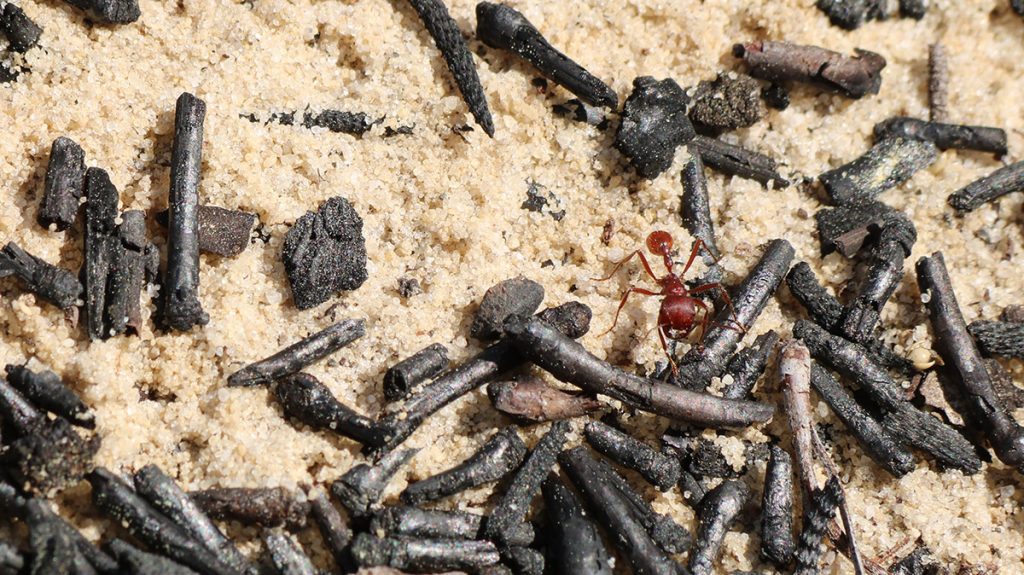
Florida harvester ant (Pogonomymex badius) re-arranges charred pine needles atop its nest. Scientists have not found a reason why this ant species does this.
The frosted elfin (Callophrys irus) not only depends on fire, it can only succeed with a specific burn schedule. Like these other animals, it has seen a sharp decline in its population due to loss of longleaf habitat. Also like these other animals, the Apalachicola National Forest is home to one of the healthiest frosted elfin populations anywhere.
“It is a pretty natural setting here,” says Dean Jue, “as opposed to some of the other sites, which might be airport right-of-ways, power line right-of-ways, that sort of thing.” And that makes it a location worth studying. “We think it might be very valuable to efforts in other states to recover frosted elfin populations.”
The Life Cycle of the Frosted Elfin
The Munson Sandhills population of frosted elfin was discovered in 2010. That’s when a team of citizen scientists- Dean and Sally along with Dave McElveen and Virginia Craig- set out to map the butterfly. Maybe you have an image of four researchers walking hundreds of acres of forest in search of little brown butterflies. By knowing the elfin’s behavior, however, it’s a little bit easier than that, but still a bit of work.
For one thing, the frosted elfin only flies for a couple of months out of the year. Like most butterfly species in our area, their adults don’t live through the colder months. As Dean and Sally tell me, many species survive as chrysalides or eggs over the winter. It’s something those of us who’ve raised swallowtail butterflies have likely seen.
They’re one of the first butterflies to emerge, starting in February. They fly for a couple of short months and then, by mid-May, their offspring are in chrysalides again, buried in leaf litter or slightly within the soil.
Frosted elfins only have a single brood a year, and in the time that they fly, they’re busy breeding. The females lay eggs on sundial lupine (Lupinus perennis), the only plant to host its caterpillars. So if you’re looking to map frosted elfin populations, you start by finding sundial lupine.
The Sundial Lupine | Larval Food of the Frosted Elfin
At the first location, Sally thinks she sees a little hole in the emerging flower of a sundial lupine, its inflorescence. “It very well could have been made by a tiny frosted elfin larva.” We don’t end up seeing any adult frosted elfin here, so we drive to the second location. The moment we step into the lupine patch, we see them.
And we see a few females bumping their ovipositors on lupine flowers. I can see it when I’m zoomed in, the tip of the abdomen opens up where the eggs come out (or oviposits). They aim between the petals of the flower, which are still growing, and which will camouflage the eggs. When the eggs hatch, the bright green caterpillars will eat their way out.
Sundial lupines are not tall plants. We see them between clumps of wiregrass and turkey oaks whose leaves have not yet grown back. They’re easy to miss next to these larger plants, so I stay watchful. As Sally reminds me, there may be eggs or caterpillars on them.
These larger plants are part of the reason sundial lupine- and, by extension, frosted elfin- need fire.
“It’s definitely fire dependent,” Dean says, “because if you don’t burn after three years, four years, the wire grass and the other shrubby vegetation will overgrow the sundial lupine, and basically eliminate the sundial lupine.”
Fire benefits the host plant and the butterfly. But as Dean and Sally learned last summer, the timing of fire is critical.
Fire in the Wetland | Fire in the Uplands
Last June, I attended an unseasonal striped newt release to the north of here. As we’ve covered previously, the Coastal Plains Institute has been releasing this imperiled species into wetlands in the Munson Sandhills. They’ve done this for several years. In recent years, they’ve released pairs of males and females during their winter breeding season, which, this year, was too dry for wetlands to hold water. The lack of rain also created an ideal environment for fire to move through the area.
We saw the results of this on the day of the release. There’d been just enough rain to release newts into their recipient wetlands, in which CPI installed liners to hold the water in. To illustrate what the pond would look like without the lining, Ryan Means led us to a nearby, unlined wetland. It was entirely empty, which allowed a recent wildfire to pass through it. The trees growing in the wetland basin were charred, but green grass was growing all around them. This illustrates why Ryan and Rebecca Means get excited about fire in their wetlands.
“Without fire,” Ryan said, “This wetland would succeed to a shrub, or forested swamp. It would not be a marshy, open wetland, full of a vast diversity of succulent vegetation.”
The wildfire seems to have helped their cause. Many of the trees, which would threaten to change the nature of the wetland if they had continued to grow, had charred needles and no green ones. So they’re are less likely to grow and shade out the wetland. However, just a month after the fire, the grasses and other ground cover vegetation were already lush and green.
A similar thing would have happened in the uplands where the sundial lupine grows. Oaks are kept in check by fire; rather than grow into trees and change the composition of the forest, fire ensures that they remain shrubs. And wiregrass gets burned back completely, but will start to grow back within a couple of weeks, fresh and green. The sundial lupine would grow back from its roots as well, just like the hundreds of other fire adapted plants found in longleaf ecosystems.
Not too far from these wetlands is the largest population of frosted elfins in the forest. At least, it had been before the wildfire.
Sundial Lupine and Fire | Timing is Everything
“Three years prior to that when there was a prescribed burn,” Dean says, “the population decreased by a third to a half from the previous year. So we were assuming it might very well be the same thing.”
The US Forest Service burns their plots here starting May 15, and through the summer. Looking at Dean’s chart of previous burns, many happened in June or July. This is when fire would naturally have occurred in the forest- when lightning storms are more common. By then, frosted elfin caterpillars have made their chrysalides in the leaf litter, or even slightly buried in the soil. This is protected enough that at least half of them should survive a fire.
This wildfire, however, happened on May 9, just slightly ahead of the earliest possible prescribed fire here. And perhaps, at that time, most of the elfin caterpillars were still on the plants. Sally tells us that “this spring, we’ve seen two or three adult elfins so far in that burn unit.” This unit had 140 elfins spotted last year.
Butterflies in the forest can tell us interesting things about fire. In our first segment with Dean and Sally, they found that butterflies survived best in a longleaf environment when fires were “patchy.’ That is, if a burn plot was burned uniformly, every plant with larvae would burn. And earlier this year, Scott Davis from the St. Marks Refuge Monarch-Milkweed Initiative told us, “‘If you manage for the milkweed, you manage for everything else in the landscape.” He was talking about the monarchs’ host plants’ need for burning.
Does this mean that land managers should base their burn practices entirely on what’s best for butterflies? No. But butterflies in the southeast evolved in a landscape with fire, just as the red cockaded woodpecker and the gopher tortoise. As Dean and Sally point out, fire affects all of the animals in the forest, and yet the focus has aways been on vertebrates. With the work of these citizen scientists and researchers like Walter Tschinkel, we’re getting a fuller image of what fire would have done naturally in the forest.
Luckily, even though the largest frosted elfin population in the forest was nearly wiped out, other locations are doing fine. I couldn’t have asked for a better day of filming.
Next week, we return to the Munson Sandhills to see another citizen science program in action- the Adopt an Ephemeral Wetland program.
WFSU EcoCitizen is funded by Nature, a production of THIRTEEN PRODUCTIONS LLC for WNET and PBS. American Spring LIVE is a production of Berman Productions, Inc. and THIRTEEN PRODUCTIONS LLC for WNET.
Major support for Nature: American Spring LIVE was provided by the National Science Foundation and Anne Ray Foundation.
Additional financial support was provided by the Arnhold Family in memory of Henry and Clarisse Arnhold, Sue and Edgar Wachenheim III, the Kate W. Cassidy Foundation, the Lillian Goldman Charitable Trust, Kathy Chiao and Ken Hao, the Anderson Family Fund, the Filomen M. D’Agostino Foundation, Rosalind P. Walter, the Halmi Family in memory of Robert Halmi, Sr., Sandra Atlas Bass, Doris R. and Robert J. Thomas, Charles Rosenblum, by the Corporation for Public Broadcasting, and by the nation’s public television stations.
This material is based upon work supported by the National Science Foundation under Grant No. 1811511. Any
opinions, findings and conclusions or recommendations expressed in this material are those of the authors and
do not necessarily reflect the views of the National Science Foundation.

